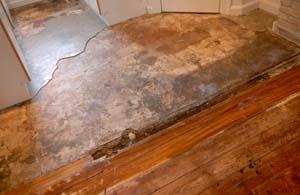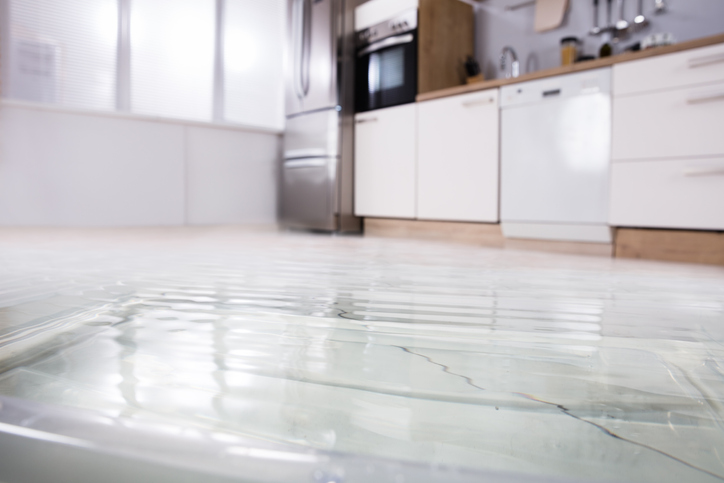Presented here below yow will discover a bunch of sensible tips around Detecting hidden plumbing leaks.

Environment change and also global warming have made their mark not simply on nations but additionally areas. When safe locations have experienced more flooding and also groundwater intrusion contrasted to recent years, the. For many property owners, groundwater invasion is currently a frustration as it appears the surface.
Understanding the indicators is always a key for avoidance and mitigating water damages and also groundwater invasion. Groundwater intrusion is just one of the worst problems to your residence. To avoid groundwater direction, routine evaluation of leakages in your house as well as inspect if your basement is wet. A wet cellar implies that groundwater is can be found in from below your residence or close by.
An increased quantity of groundwater makes your residence more prone to flooding. You can still avoid groundwater from harming your precious residence.
Waterproof your Cellar
Water-proof your cellar currently and also don't wait before it's too late. If you don't hurry, the groundwater can break in with rainfall as well as flooding.
To water-proof your basement, fill the basement with more concrete to prevent any groundwater issues. You require to prep the location as well as get rid of all the items stored in that space. This task ought to be a concern and is the best long-term service to the issue. Setting up concrete and also using waterproofing procedures seals your basement and also shields it from water breach.
Consider Mounting a French Drainpipe System
A French drainpipe system includes polypropylene tubing. This sort of drainpipe system assists as a channel, which is lined with concrete. Even more, they don't look noticeable to a stranger's eye because these drains pipes appear like a pipe or trench that blends in their environment. The advantage of this system is it safeguards your residence from extra issues as it prevents the water from permeating right into your foundation.
Even more, this system quits your floors from water flooding. The system is really simple to set up - you easily change this About This type as well as fit of system anytime.
Buy Several Sump Pumps
Sump pumps are extremely affordable products and are readily available in hardware shops. The pump's key goal is rerouting the water from inflowing your house. This device can protect your residence from increasing groundwater. A sump pump will certainly provide a layer of protection if you feel distressed about groundwater seeping right into your basement. Many people like this because they are easy as well as economical to set up. It can additionally spike up your energy expenses.
Mount these pumps (as well as several of them) in your basement or crawlspace. When setting up, make certain that the tubes is placed into a drain or out onto the street.
Increase the Building Permanently
Raising the structures of your residence completely is a effective as well as long-time solution to stop incoming groundwater. The overall process involves producing a new, higher foundation to raise the house above the flooding area.
Using these suggestions will assist shield your residence and belongings against water damage. If you tried all of these tips and still obtained water damages, it's finest to call in the professionals. Call a water remediation firm today to aid you return on the right track.
The once safe locations have experienced more flooding and also groundwater invasion contrasted to recent years. Recognizing the indications is always a trick for prevention and mitigating water damage and groundwater breach. Groundwater invasion is one of the worst problems to your house. To prevent groundwater guideline, routine evaluation of leakages in your house as well as check if your cellar is damp. To water resistant your basement, fill up the basement with even more concrete to Find Out More protect against any type of groundwater issues.
8 EFFECTIVE STEPS FOR REPAIRING A WATER-DAMAGED SUBFLOOR
HOW TO FIX A WATER-DAMAGED SUBFLOOR: YOUR 8-STEP DIY GUIDE
Subflooring is one of your home’s most important architectural components. It supports the first floor by securing the floor joists that span your basement or crawl space. The subfloor forms an underlying plane that holds up walls and serves as a level foundation for finished floors.
When this structural element gets soaked, you need to start the drying and repair process right away. If you’ve ever handled water damage cleanup on your own, you know how quickly problems can spread.
START BY STOPPING THE WATER
Unless you’re dealing with the aftermath of a flood, water in the subfloor has a source somewhere in the house. You need to find it and fix it before starting repairs.
EXPOSE THE SUBFLOORING
Remove baseboards around affected areas, and pull back carpeting to the nearest wall. If you’re working with vinyl flooring, cut out sections over the water-damaged subfloor, and plan on replacing them after you complete repairs.
Power Tip: As you remove baseboards, inspect adjacent drywall for signs of water damage.
MAKE YOUR MARK
Use chalk to mark and map areas that need repair. These guides help you make accurate cuts through the damaged subfloor. You want to measure and outline beyond affected areas and close to adjacent floor joists.
Power Tip: There are several ways to locate floor joists, but a stud finder keeps the job easy and accurate.
CAREFULLY CUT SUBFLOORING
Put on a pair of work gloves, a dust mask and eye protection. Using a circular saw set to a 1-inch depth, carefully cut out damaged areas by following your chalk mark guides. Cut as closely as possible to floor joists.
REMOVE DAMAGED MATERIALS
Pull up water-damaged subflooring with a pry bar. Minimize splintering by working slowly. Remove any loose nails, and dispose of everything in heavy-duty trash bags. Use a shop vac to clean up remaining dust and debris.
INSTALL YOUR NEW SUBFLOORING
Measure new subflooring material, and cut it to fit. Allow a one-eighth inch gap between old and new subflooring so that the new material can expand. Use deck screws or 8d galvanized nails to fastened down the new subflooring.
Power Tip: Finish the job faster by renting a rapid-load screw gun or nail gun from your home improvement center.
https://www.servicemasterbyzaba.com/blog/how-to-repair-a-water-damaged-subfloor/

Do you really like reading up on Detecting hidden plumbing leaks? Try to leave a short review further down. We will be glad to see your insights about this entry. We are looking forward that you come back again before long. Enjoyed reading our blog posting? Please share it. Let others check it out. We thank you for reading our article about Leaking water lines.